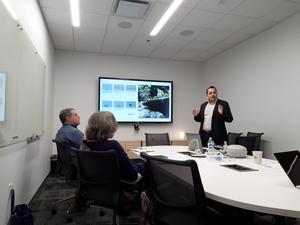
Have you ever heard of toluene?
It’s a common chemical and an effective solvent that can be found in a variety of products — paint, nail polish, glues, and stain removers. But toluene can also reach the brain through inhalation, impacting circulation and potentially causing dizziness, blurred vision, and even neurological deficits.
While no one is sure how or why toluene exposure affects brain circulation, a team from the University of Tennessee Health Science Center (UTHSC) is attempting to find out. And it’s received a big chunk of change to do so.
According to a press release, a group of researchers from UTHSC has scored a five-year, $2.19 million grant from the National Institute of Environmental Health Sciences, for its investigation of the neurotoxic effects of toluene. The project’s principal investigators are Alex Dopico, M.D., and Anna Bukiya, Ph.D., professors of the Department of Pharmacology, Addiction Science, and Toxicology. Jeff Steketee, Ph.D., also professor in the department, is a co-investigator.
Right now, the group believes that toluene reduces the activity of a protein in the cerebral artery muscle cells, causing the brain arteries to constrict when exposed to the chemical.
The group will conduct tests to identify the specific mechanisms causing these arteries to constrict in Toluene’s presence. And the tests are expected to deliver new selective drug therapies for early intervention in toluene-induced brain ischemia.
Flu simulations
Dopico and co. aren’t the only UTHSC faculty members to earn big awards recently.
Amber Smith, Ph.D., associate professor in the Department of Pediatrics, is serving as the lead investigator for a team that’s received a $2.84 million award from the National Institute of Allergy and Infectious Diseases.
The funds will be used to develop a new computational approach to better understand flu infections, as their severity levels can range drastically — from asymptomatic to deadly. How a patient handles an infection can hinge on an array of factors, like geography, genetics, and underlying health conditions.
“With so many factors at play, it’s difficult to understand which ones have a role and whether they are meaningful, with respect to outcome,” Smith said in the release.
She and her team will use the new computational approach to simulate individual flu patients under a variety of conditions. They’ll analyze different patient responses to infection and treatment, test analytical predictions of infection risk, and define biomarkers that predict infection severity.
Awards like these are nothing new for UTHSC.
According to MBJ research, the institution received $126.6 million in research grants and contracts in FY 2021, the second most in the Memphis area, behind only St. Jude Children’s Research Hospital.









